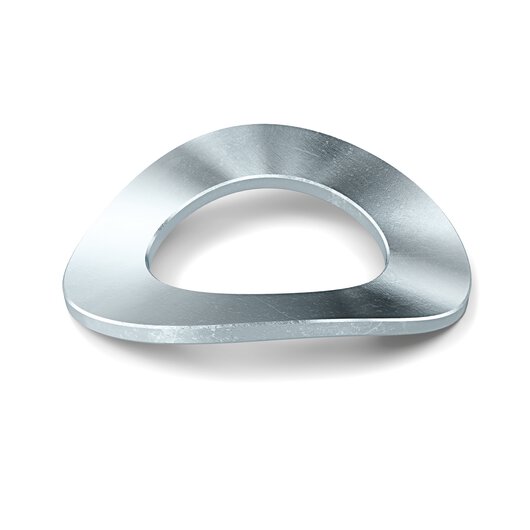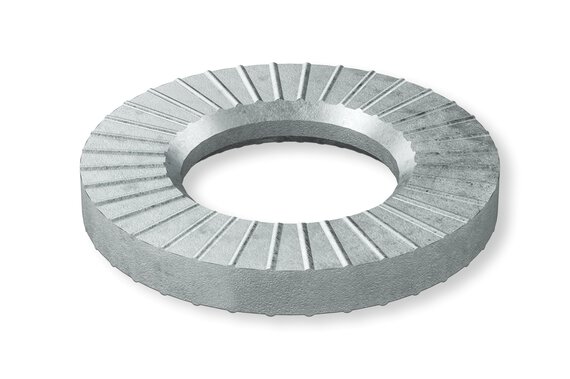Serrated lock washers have a large number of slightly interlaced metal tabs on the inside or outside.
During assembly, they dig into the surfaces of the clamped components. Due to the many contact points, serrated lock washers also provide excellent electrical contact and are often used for grounding purposes. Serrated lock washers can also be used as a locking element for low-strength screws.
Standards
- DIN 6798 A
- DIN 6798 I


